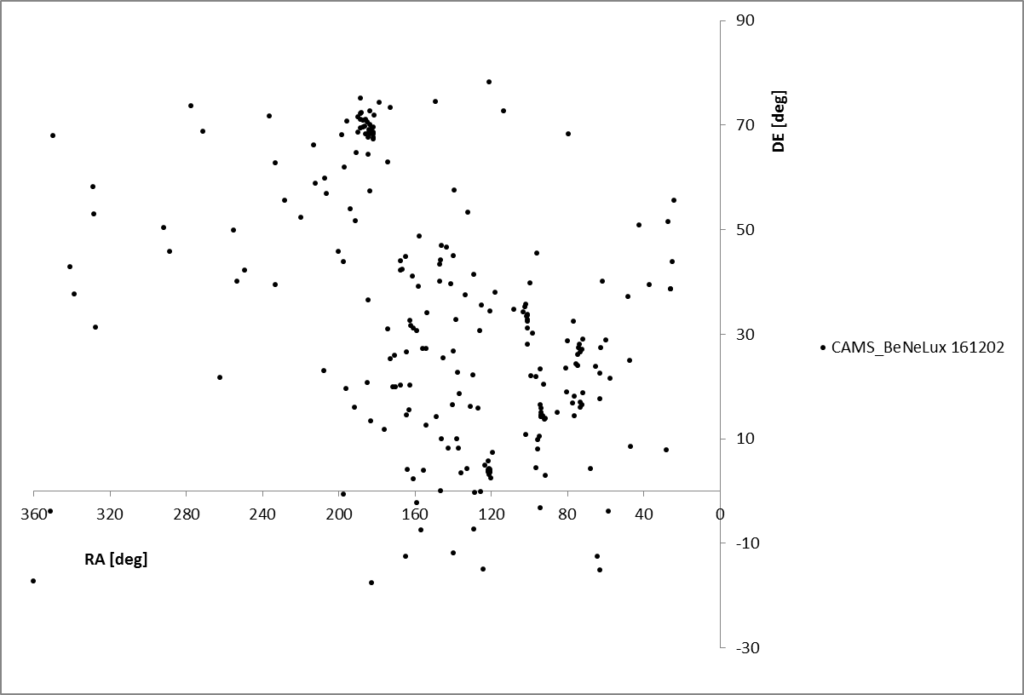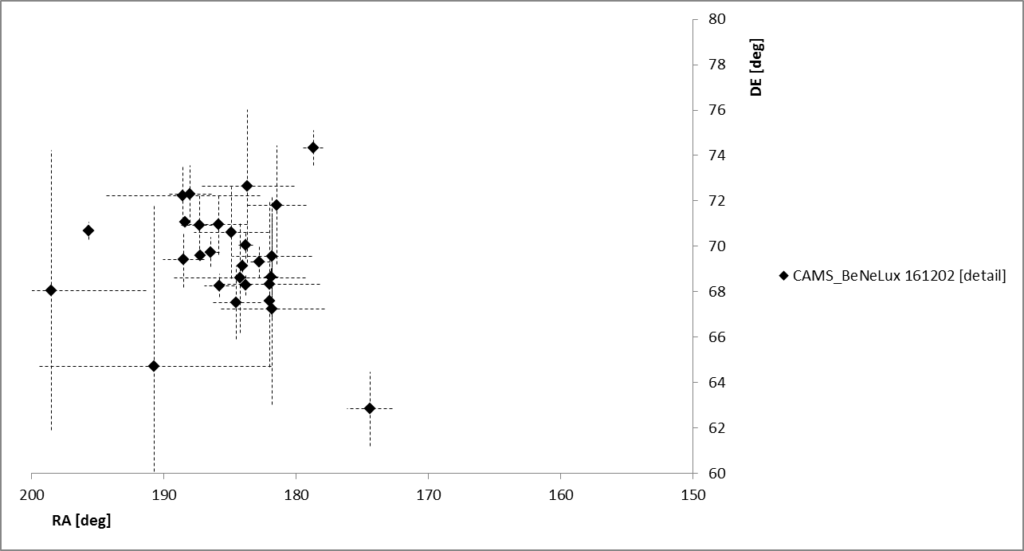By Carl Johannink and Martin Breukers
Introduction
The night December 2/3 was clear in the BeNeLux. This was a good opportunity to check whether CAMS BeNeLux could confirm the forecast for enhanced activity of the 66-Draconids meteor shower (Antier, 2016). According to dynamical modeling results for 2016 by Jérémie Vaubaillon, the 66-Draconids meteor shower might show some enhanced activity on December 2nd (around 21h30m UT) and December 3rd (around 07h00m UT). The theoritical radiant would be located at RA = 310°, Dec. = +64° position, which is between Draco and Cepheus. So the radiant would be circumpolar for our latitudes.
The observational data
In the morning the data for this night from Klaas Jobse (Oostkapelle), Jos Nijland (Benningbroek) and Carl Johannink (Gronau) were the first available, so we checked whether the radiantpositions for simultaneously captured meteors agreed with the theoretical radiant. Unfortunately, this was not the case. However some meteors appeared to have a radiant at another position in Draco, but the number of simultaneous meteors (at that moment 3) was too low for a definite conclusion.
In the afternoon data from other stations became available : Paul Roggemans (Mechelen), Koen Miskotte (Ermelo), Martin Breukers (Hengelo), Erwin van Ballegoij (Heesch), Cees Bassa (Dwingeloo), Robert Haas (Alphen aan de Rijn), Tim Polfliet (Gent), Hans Betlem (Leiden), Jean-Marie Biets (Wilderen) en Bart Dessoy (Mostheuvel). Now it was obvious: there was enhanced activity from another region in Draco, located at RA=186°, DE =70°, that night : the established shower (336) DKD December kappa Draconids (Jenniskens et al., 2011, 2016). The first meteor of this stream was captured trimultaneously at 19:39 UT from Benningbroek, Hengelo and Gronau. The last meteor was captured at 05:08:48 UT from Hengelo, Dwingeloo and Gronau.

Figure 1 – all radiants for December 2/3.

Figure 2 – detail of figure 1.
References
Antier K. (2016). “Possible 66-Draconids activity on Dec 2-3 2016”. On www.imo.net.
Jenniskens P., Gural P. S., Grigsby B., Dynneson L. , Koop M. and Holman D. (2011). “CAMS: Cameras for Allsky Meteor Surveillance to validate minor meteor showers”. Icarus, 216, 40-61.
Jenniskens P., Nénon Q., Albers J., Gural P. S., Haberman B., Holman D., Morales R., Grigsby B. J., Samuels D. and Johannink C. (2016). “The established meteor showers as observed by CAMS”. Icarus, 266, 331-354.

